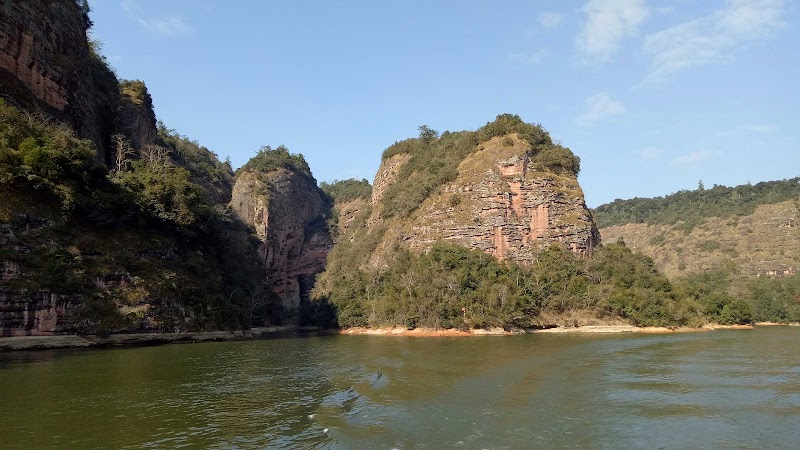
Experience the dynamic fusion of hiking and heritage with the Wuyi Tea Culture Tour in Sanming, Fujian this spring. Traverse forested paths and tea terraces buzzing with the season's fresh harvest, all while immersing yourself in the rich tea traditions that have thrived here for centuries.
Start Early to Beat the Heat
Begin your hike in the morning to avoid afternoon temperatures rising, especially on exposed ridges where the sun presses down.
Wear Sturdy Footwear with Grip
The trail includes rocky and mossy sections; shoes with good traction reduce slip risk and improve stability on uneven ground.
Carry Refillable Water
Hydration stations are limited en route; bring at least 1.5 liters of water to stay refreshed during climbs and tea breaks.
Engage with Local Guides
Guides enrich your experience with tea harvest insights and historical context, making your trek both educational and immersive.
Spring Awakening: Exploring Wuyi Tea Culture and Trails in Sanming, Fujian
Waking up to the spring breeze in Sanming, Fujian, the Wuyi Tea Culture Tour invites you on a journey where rugged trails meet centuries-old tea traditions. This hike stretches approximately 12 kilometers, with an elevation gain of around 450 meters, threading through tea terraces, forested slopes, and craggy peaks that demand both attention and respect. The terrain is a mix of packed earth paths and stone steps steeped in history, offering a clear but engaging challenge for casual hikers and seasoned adventurers alike.
The air carries a fresh, earthy aroma, punctuated by the subtle fragrance of tea leaves awakening after winter’s rest. Trees, still shedding gentle showers of petals, guard the path like patient guides. Streams nearby dare you to pause and refill, their currents cool and insistent. Panoramic views from the higher ridges reward every ascent—a sweeping mosaic of verdant plantations and distant blue mountains shifting with the morning mist.
In spring, the tea gardens burst with new life, and local farmers are busy hand-picking fresh leaves, offering a rare opportunity to see traditional tea harvesting up close. Engage with knowledgeable guides who share not only the craft behind Wuyi’s signature oolong teas but also the cultural lore and ecological significance that make this place fiercely itself.
Timing your trek early in the day maximizes comfort and visibility while avoiding the rising midday heat. Footwear with solid grip is essential; the occasional loose stone and damp moss require careful steps. Bring a refillable water bottle—hydration is key, especially while navigating steeper sections. Plan for a moderate pace over about four to five hours, including stops for tea tastings and photo breaks.
This hike invites a practical adventure infused with culture—where nature challenges your legs and the tea enriches your spirit. Whether you're here for the exercise, the scenery, or the steeped heritage, the Wuyi Tea Culture Tour in spring offers a fulfilling balance of discovery and exertion.
Nearby Trips
All Adventures
Boat Charters
Water Activities
Adventures near Sanming, Fujian
Discover the unique and memorable adventures that make Sanming, Fujian special.
Frequently Asked Questions
How crowded does the Wuyi Tea Culture Tour get during spring?
Spring sees moderate visitors, mainly local tea harvesters and enthusiasts. Weekdays are quieter, while weekends attract more tourists interested in tea picking.
Are there any parts of the trail suitable for casual or family hikes?
Yes, the initial 4 kilometers near the tea terraces are gentle and well-maintained, perfect for families or casual hikers before the trail steepens.
Can visitors participate in tea picking on the tour?
Local farmers often welcome visitors to experience hand-picking, but participation depends on the harvest schedule. Booking with a guide increases your chances.
What wildlife might one encounter along the trail?
Birds such as the Chinese Hwamei sing from the forest canopy, while playful squirrels dart across the underbrush. Spring also brings the chance to see rare butterflies.
Is the area environmentally protected due to tea cultivation?
Yes, sustainable tea farming practices are promoted to protect the watershed and biodiversity of the Wuyi mountains, with strict controls on pesticide use.
Are there any lesser-known viewpoints worth the extra effort?
Beyond the main ridge lookout, a short climb to Longjing Peak reveals an unobstructed panorama of the vast tea mountains and ancient stone paths rarely visited by tourists.
Recommended Gear
Hiking Shoes with Good Traction
Essential for handling slippery stones and uneven paths typical during spring rains.
Lightweight Rain Jacket
Spring showers are common; a compact rain jacket protects against sudden rain without overheating.
Reusable Water Bottle
Keep hydrated on variable-temperature trails where water sources are not guaranteed.
Wide-Brimmed Hat
Blocks sun during exposed stretches and helps regulate temperature under increasing spring sunlight.
Local Insights
Hidden Gems
- "Longjing Peak for expansive, quiet views away from the main trail"
- "Small tea herb gardens run by local families along the trail"
- "Ancient stone bridges hidden beneath moss near stream crossings"
Wildlife
- "Chinese Hwamei (songbird)"
- "Asian giant squirrel"
- "Spring butterflies like the Common Nawab"
History
"The area is home to centuries-old tea farms famed for Wuyi Rock Tea, an oolong variety with a unique mineral texture shaped by the soil and climate. The tea culture here intertwines with ancient traditions of harvesting and processing still practiced today."
